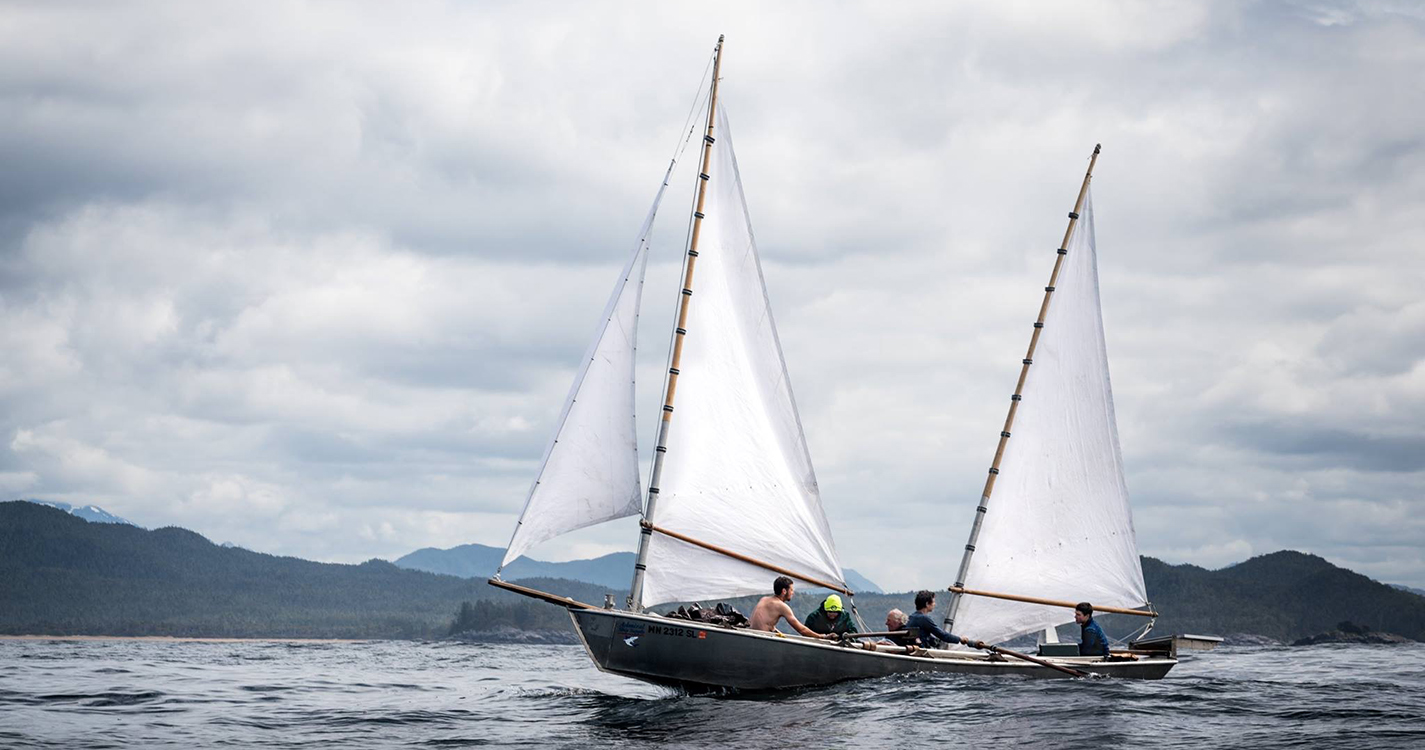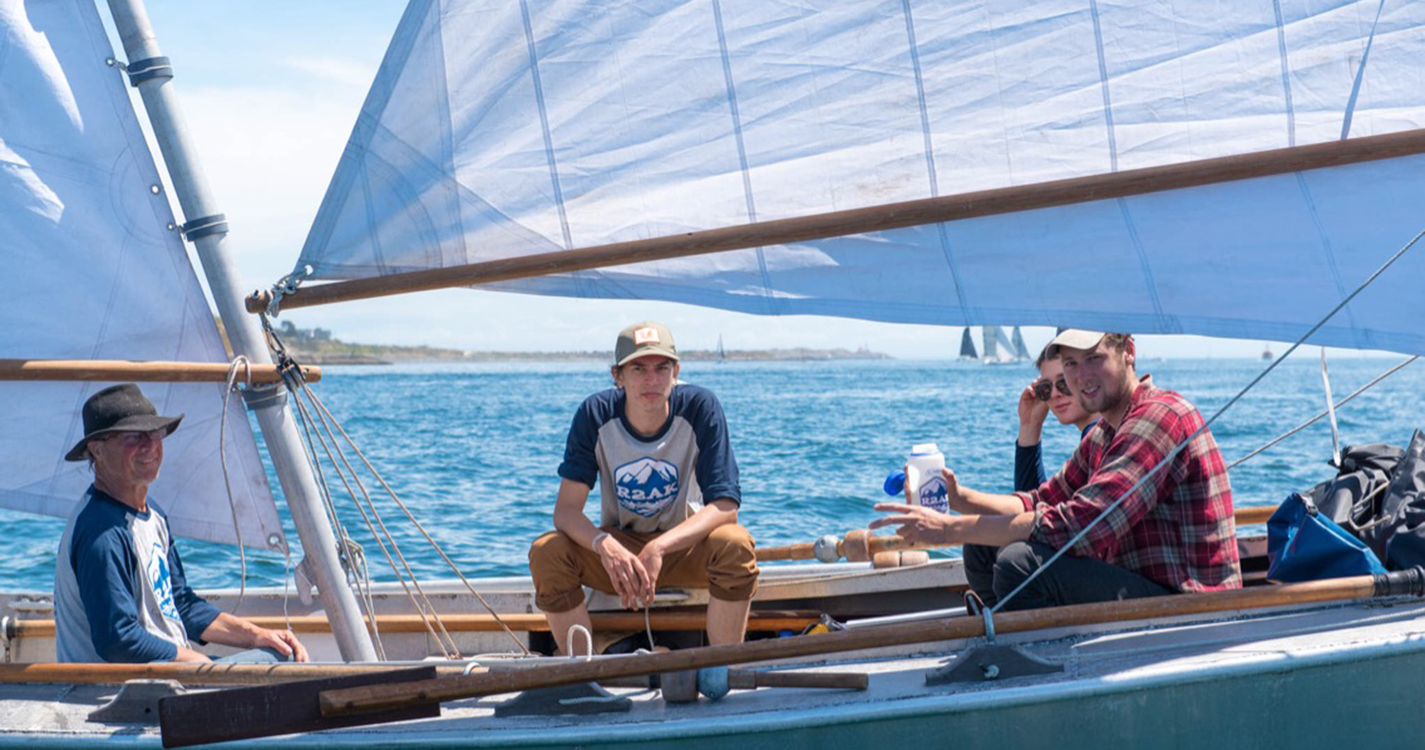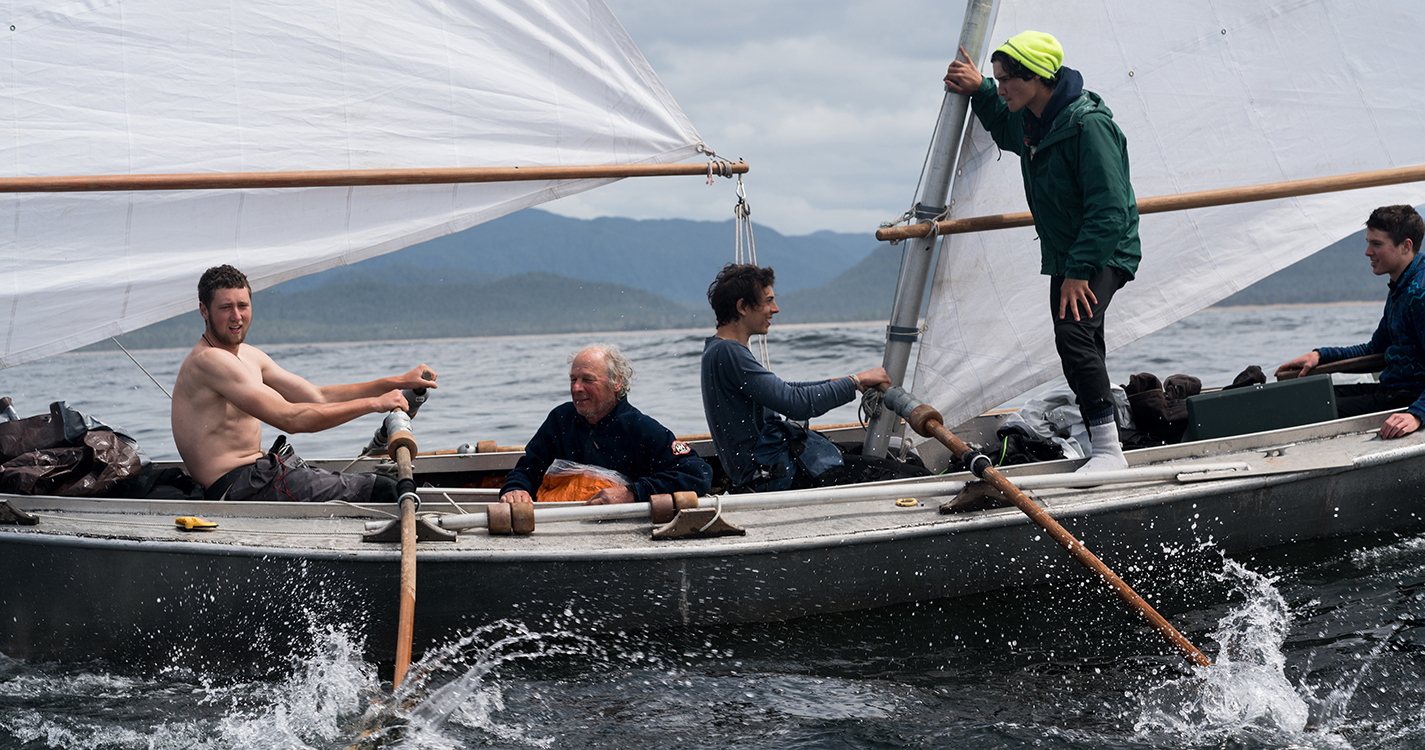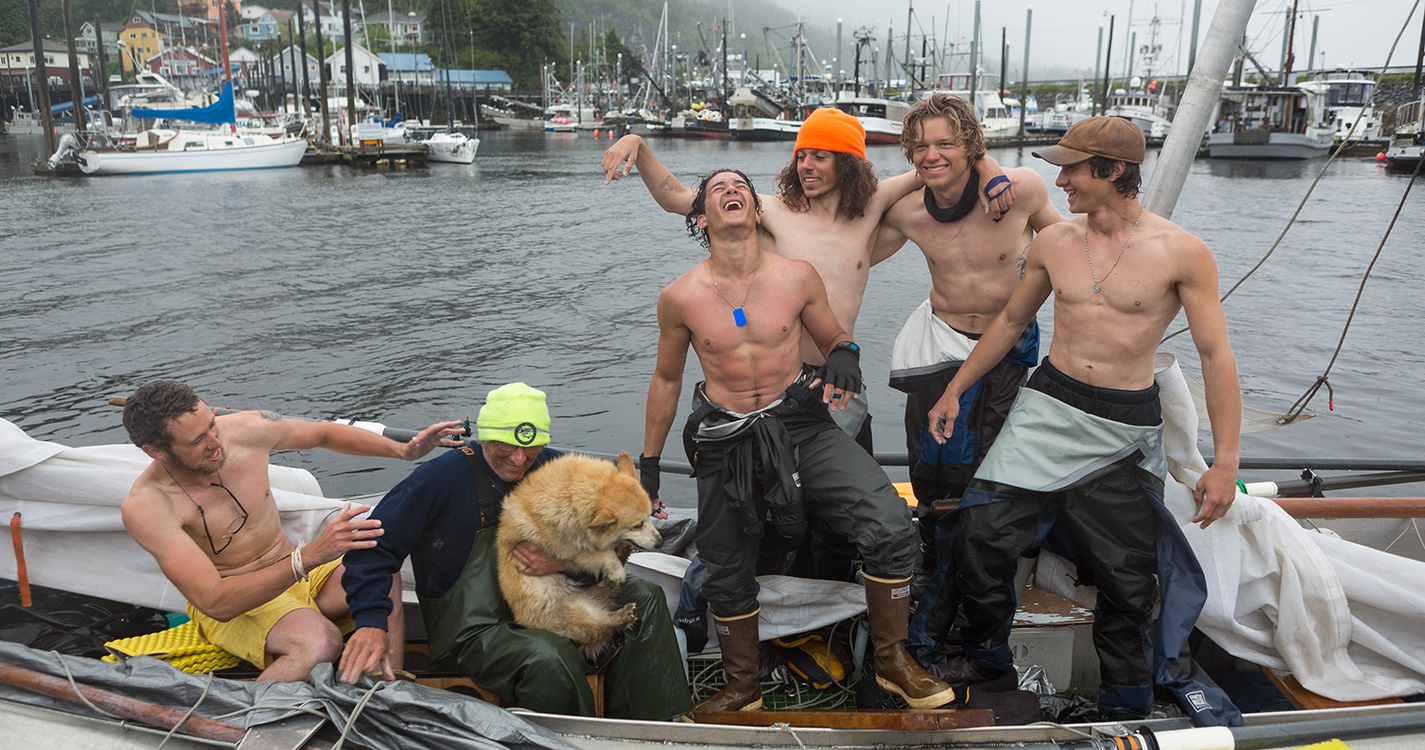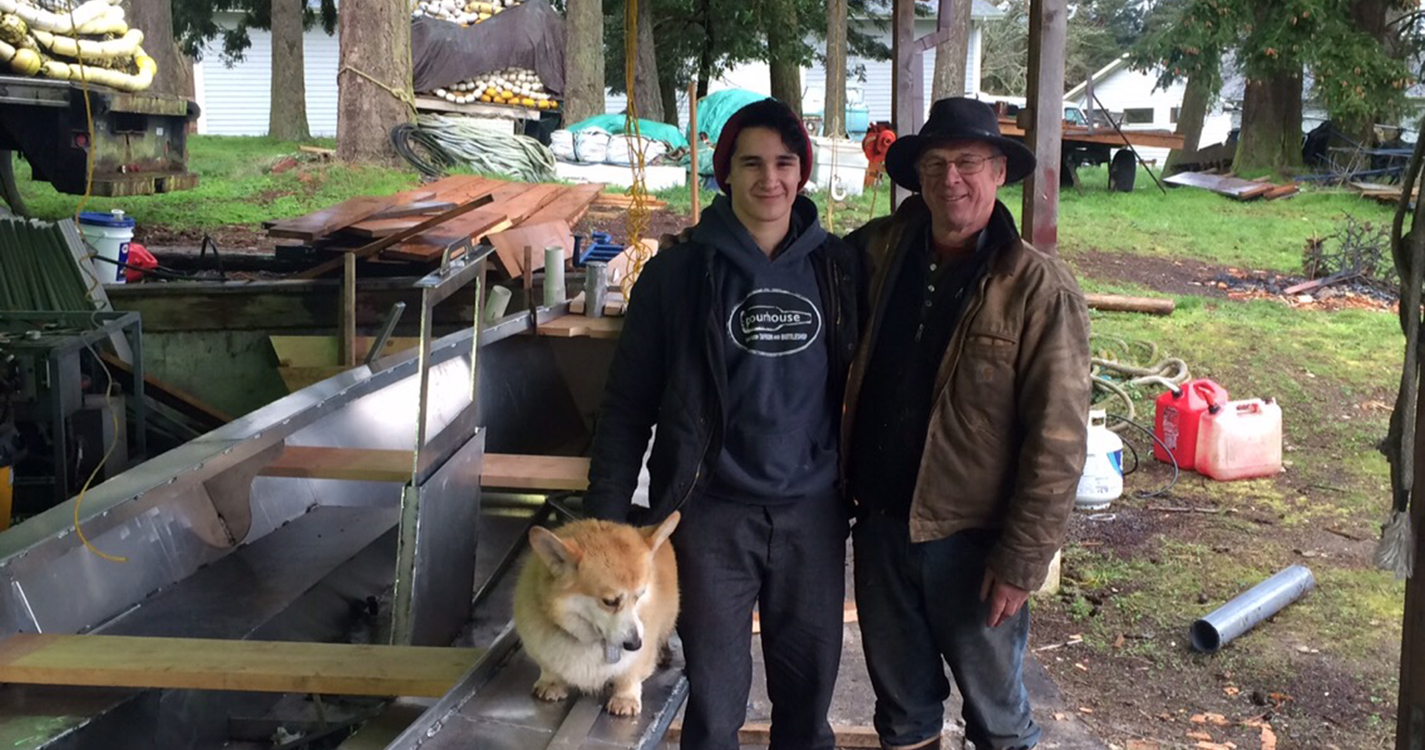Henry Veitenhans ’22 and a small team had just embarked on an adventure unlike any other — the Race to Alaska, a 750-mile race from Port Townsend, Washington, to Ketchikan, Alaska.
Rowing in an ultra-narrow sailboat on the Salish Sea, they glimpsed the harbor mouth at their initial goal of Victoria, British Columbia. But a friendly breeze that had been pushing them toward Victoria turned violent, culminating in 50-mph gusts and 10-foot-high waves that later forced them to row in place for three hours to avoid smashing into a rock cliff.
Veitenhans finished the 2017 race in nine days and 22 hours — he was the youngest captain to lead a team.
A daunting challenge, even to seafarers
R2AK is the longest endurance race of its kind on the continent.
Teams build their own boats (no motors) and rely on muscle power and wind to haul themselves hundreds of miles in the face of possible drowning, massive tidal currents and other challenges. Half of those who attempt it never complete it.
In 2017, Veitenhans was required to do a community-based capstone project his senior year of high school — the perfect opportunity to build a boat for R2AK.
After assembling a five-person racing team including his father and experienced high school sailors, Veitenhans helped his father build a Maryland fishing sharpie designed to maximize rowing capabilities and sewed the sails by hand.
Veitenhans, who was raised in Port Townsend by a family of commercial fishermen, spent most of his life traveling along the Inside Passage to Alaska with his dad, a lifelong seafarer. Finishing the race together the first time was incredibly fulfilling. His father, who was 65 years old at the time, “exhibited a degree of grit so few people have, and I felt like I was getting to show the world how special he is,” Veitenhans said.
One more time
After that initial race in 2017, he knew he had to do it again.
This past summer, he returned to the race — this time joined by Tommy Gray ’22 and cameras to film his journey, thanks to a Willamette research grant.
College Colloquium Student Research Grant funds upgraded the sharpie with sliding seats and carbon fiber oars to gain more speed. A new crew including Veitenhans’ 16-year-old brother assembled and boosted the crew’s manpower to six people. But the biggest addition was two GoPros and an Olympus digital camera to capture the race.
“Juggling what needed to be done for the race and what needed to be done for the documentary was very hard,” he said. “I often found myself wishing I just had a film team as well as a crew.”
New opportunity
Veitenhans approached the 2019 race with confidence.
R2AK is divided into two stages: 40 miles of open water from Port Townsend to Victoria, then 710 miles mostly inland from Victoria to Ketchikan. Stage 1 is called “the proving ground” for a reason, said Veitenhans.
The tumultuous storm his crew ran into in 2017 drove them 20–25 miles off course, broke their mast and forced “this terrible moment of trying to get the mast back without losing anyone overboard,” he said. Their survival of this leg was crucial.
But last summer, despite unfavorable tides, a lack of wind and narrow channels with adverse currents — they averaged 5 knots per hour, about twice as fast compared to the first race — the team crossed the finish line at an impressive 10 days and 20 hours.
What remains now is “many, many yards of film” to edit for his colloquium project, and the next step toward a bigger goal: a more polished film to submit to the Port Townsend Film Festival as a tribute to his community and family.


